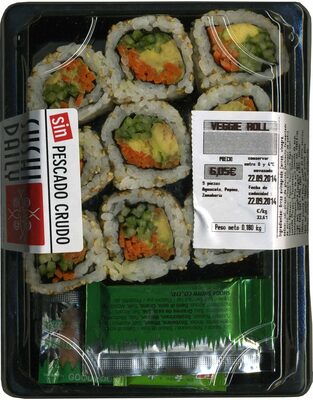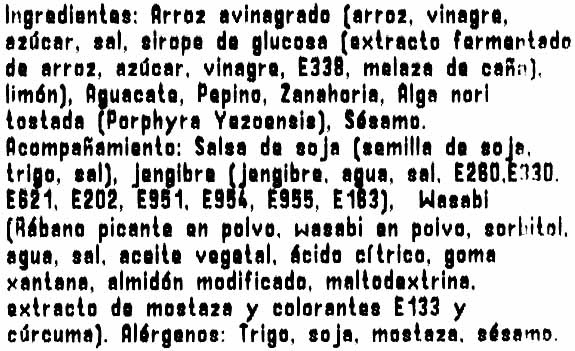Veggie roll - Sushi Daily - 180 g (9 piezas)
Aquesta pàgina del producte no està completa. Podeu ajudar a completar-la editant-la i afegint-hi més dades a partir de les fotos ja disponibles, o fent-ne més amb l'aplicació de androide o iPhone / iPad. Gràcies!
×
Codi de barres: 8436539680048 (EAN / EAN-13)
Nom comú: Maki sushi vegetal con aguacate, pepino y zanahoria
Quantitat: 180 g (9 piezas)
Empaquetament: en:Refrigerated, es:Bandeja de plástico
Marques: Sushi Daily
Categories: Aliments i begudes amb base vegetal, Aliments amb base vegetal, Menjar preparat, Aliments refrigerats, en:Sushi and Maki, en:Makis, Aliments a base de vegetals, Menjars refrigerats, en:Sushis, en:Cucumber sushis
Etiquetes, certificacions, premis: Vegetarià
Llocs de fabricació o processament: España
Codi de traçabilitat: KELLYDELI S.L.
Enllaç a la pàgina del producte en el lloc oficial del productor: http://www.sushidaily.com/nuestros-produ...
Botigues: Carrefour
Països on es va vendre: Espanya
Matching with your preferences
Entorn
Empaquetament
Transport
Report a problem
Fonts de dades
Producte afegit per javichu
Última modificació de la pàgina del producte per packbot.
La pàgina del producte, també editada per beniben, desan, elcoco, neptuno, scanbot, tacite-mass-editor, thaialagata.








